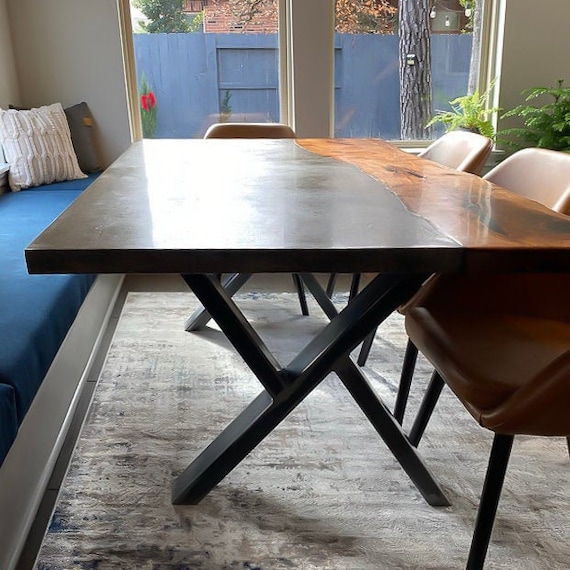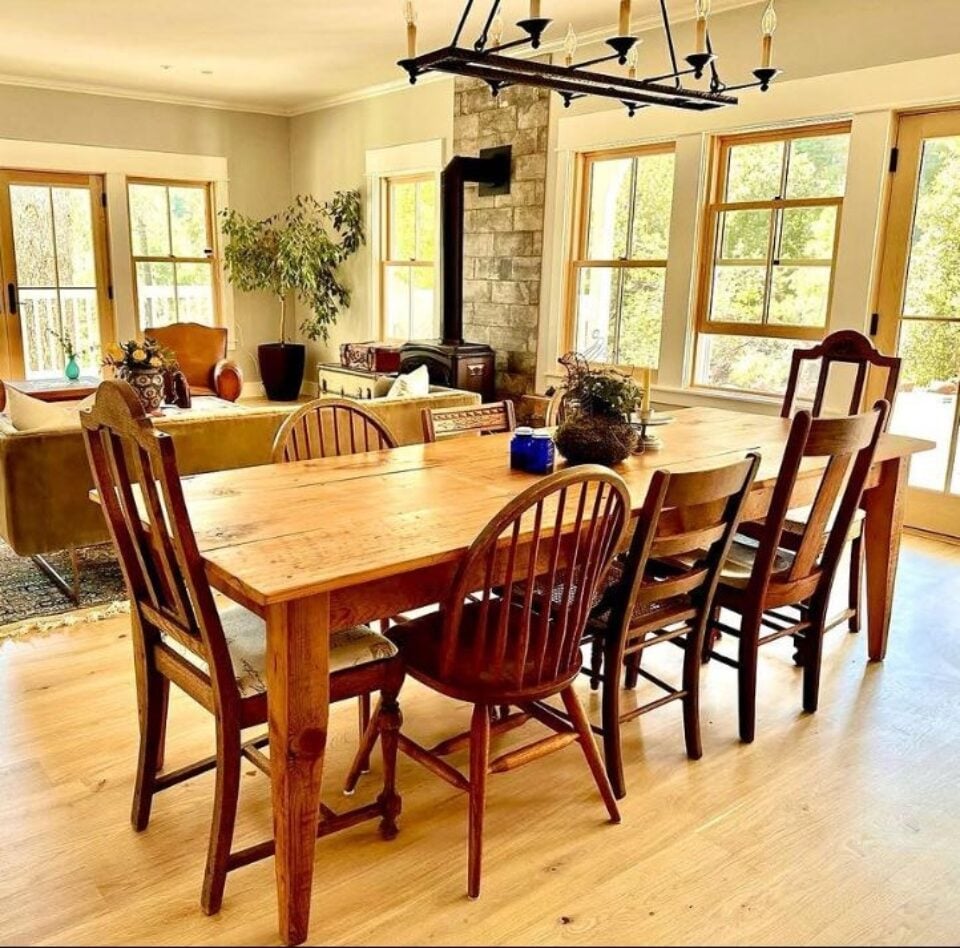Exploring the Various Kinds Of Dining Table Legs Timber for Your Dining Room
The choice of table legs wood can exceptionally impact both the functional and visual high qualities of your eating area. Strong wood options, such as oak and walnut, give a traditional look with unparalleled durability, while crafted timber options offer ingenious layouts that imitate the richness of all-natural grains. Additionally, the expanding trend of recovered wood introduces a lasting element that charms to environmentally aware consumers. As we check out these various options, it comes to be essential to take into consideration not just the visual charm yet likewise the functional effects of each product choice. What elements should lead your decision?
Solid Wood Options

Unlike engineered products, solid wood is much less susceptible to bending and damage over time when properly maintained. Each piece of solid wood is distinct, showcasing private attributes that include to the appeal and character of the dining table.
In addition, strong timber can be completed in countless means, varying from all-natural oils to stained finishes, permitting homeowners to customize their furniture to match their decor. In summary, selecting solid timber for dining table legs not only makes certain architectural integrity however also enhances the visual charm of the dining location, making it a rewarding financial investment for any kind of home.
Engineered Timber Alternatives

Plywood, created from several layers of wood veneer, is specifically strong and stable, making it an outstanding selection for dining table legs. Its split composition allows it to hold up against adjustments in humidity and temperature level much better than traditional strong wood. MDF, on the various other hand, offers a smooth surface area for painting or veneering, making it possible for developers to accomplish a polished appearance while preserving architectural stability.
Particleboard, typically used in budget-friendly choices, offers decent toughness and is lightweight, making it less complicated to deal with. It might not be as resilient as plywood or MDF. It is crucial to think about the desired use and desired visual when picking engineered wood options. These products not just boost the functionality of dining rooms but additionally allow for higher design adaptability, guaranteeing that modern and standard designs can exist side-by-side sympathetically.
Reclaimed Timber Features
Reclaimed wood supplies an unique mix of sustainability and personality, making it a significantly prominent selection for eating table legs. Sourced from old barns, manufacturing facilities, and various other frameworks, redeemed wood embodies a background that brand-new products just can not duplicate. home Each piece carries its very own tale, noted by distinct blemishes, knots, and varying grain patterns, which add to a table's one-of-a-kind visual appeal.
Along with its visual appeal, redeemed timber is an eco-friendly choice. By repurposing previously used materials, it lowers the need for brand-new lumber, therefore assisting to decrease and conserve forests waste. This aligns with a growing consumer preference for lasting practices in home furnishings.
Furthermore, reclaimed wood is commonly a lot more sturdy than newly harvested timber because of its age. The natural drying out procedure that redeemed timber undertakes cause a denser and more powerful product, making it less susceptible to warping and splitting. This enhances the durability of dining tables, permitting them to stand up to the roughness of daily use.
Softwood vs. Hardwood
When picking table legs, comprehending the distinctions between softwood and hardwood is crucial for attaining both useful and aesthetic objectives. Softwoods, stemmed from coniferous trees, such as pine and cedar, are defined by their lighter weight and ease of adjustment. They normally exhibit a more rustic look, making them ideal for informal or country-style eating rooms. Softwoods are normally less durable than hardwoods, which can be a factor to consider for families or those seeking longevity in their furnishings.
On the various other hand, hardwoods, sourced from deciduous trees like oak, cherry, and maple, are renowned for their thickness, strength, and resilience. The detailed grain patterns and rich colors of woods give a timeless and sophisticated charm, making them suitable for formal dining setups. While hardwoods have a tendency to be extra expensive and much heavier, their resilience against wear and tear often warrants the financial investment.
Ultimately, the selection in between softwood and wood for eating table legs pop over here should align with your layout vision, use demands, and budget, making sure that your dining area shows your personal design while remaining practical in time.

Surfaces and Therapies
The aesthetic appeal and long life of eating table legs can be considerably boosted with different finishes and therapies. These processes not only protect go to my site the timber from damages yet likewise elevate its look, allowing it to complement diverse interior styles.
One typical therapy is tarnishing, which passes through the timber and enhances its all-natural grain while adding color. Stains provide a rich, elegant look, allowing property owners to match their furniture with existing decor. On the other hand, clear surfaces such as polyurethane or varnish create a safety layer without changing the wood's original color, making certain sturdiness versus wear and tear.
Furthermore, natural oils, like tung or linseed oil, nurture the timber and provide a refined sheen, all while being eco-friendly. These oils allow the surface area to take a breath, preventing dampness buildup and possible bending.
For those seeking a rustic charm, troubled or weather-beaten coatings can be used to produce an aged appearance, adding character to the item. Ultimately, the selection of treatments and finishes depends upon individual choice, wanted aesthetic appeals, and the details timber kind, making it necessary to think about these variables when selecting table legs for your room.
Final Thought
Finally, the choice of table leg products substantially influences both the functional and aesthetic aspects of a dining area. Solid woods, crafted choices, and recovered options each offer distinctive advantages, satisfying various preferences and needs. Recognizing the distinctions between softwoods and hardwoods, together with proper surfaces and therapies, allows for educated decision-making. Inevitably, the choice of timber type should line up with preferred design, resilience, and ecological factors to consider, improving the overall eating experience.
The option of eating table legs timber can exceptionally impact both the visual and functional high qualities of your dining room - Dining Table Legs Wood. Solid timber alternatives, such as oak and walnut, provide a traditional appearance with unequaled resilience, while engineered timber choices offer ingenious layouts that simulate the richness of all-natural grains. Solid wood provides a classic quality that can boost the total layout of a dining space. Each item of solid timber is special, showcasing individual features that include to the appeal and personality of the dining table
In addition, reclaimed timber is typically a lot more resilient than newly collected wood due to its age.